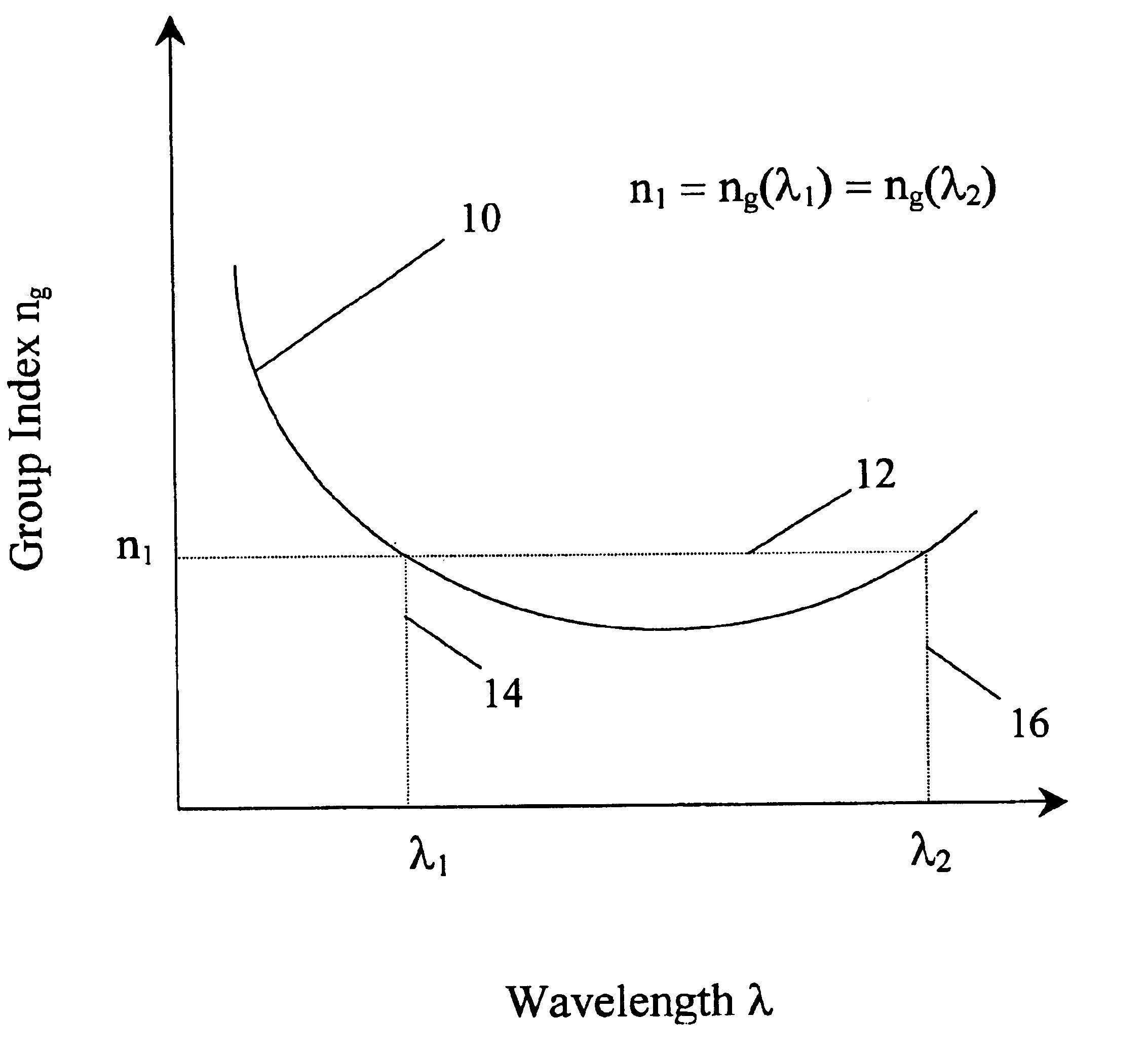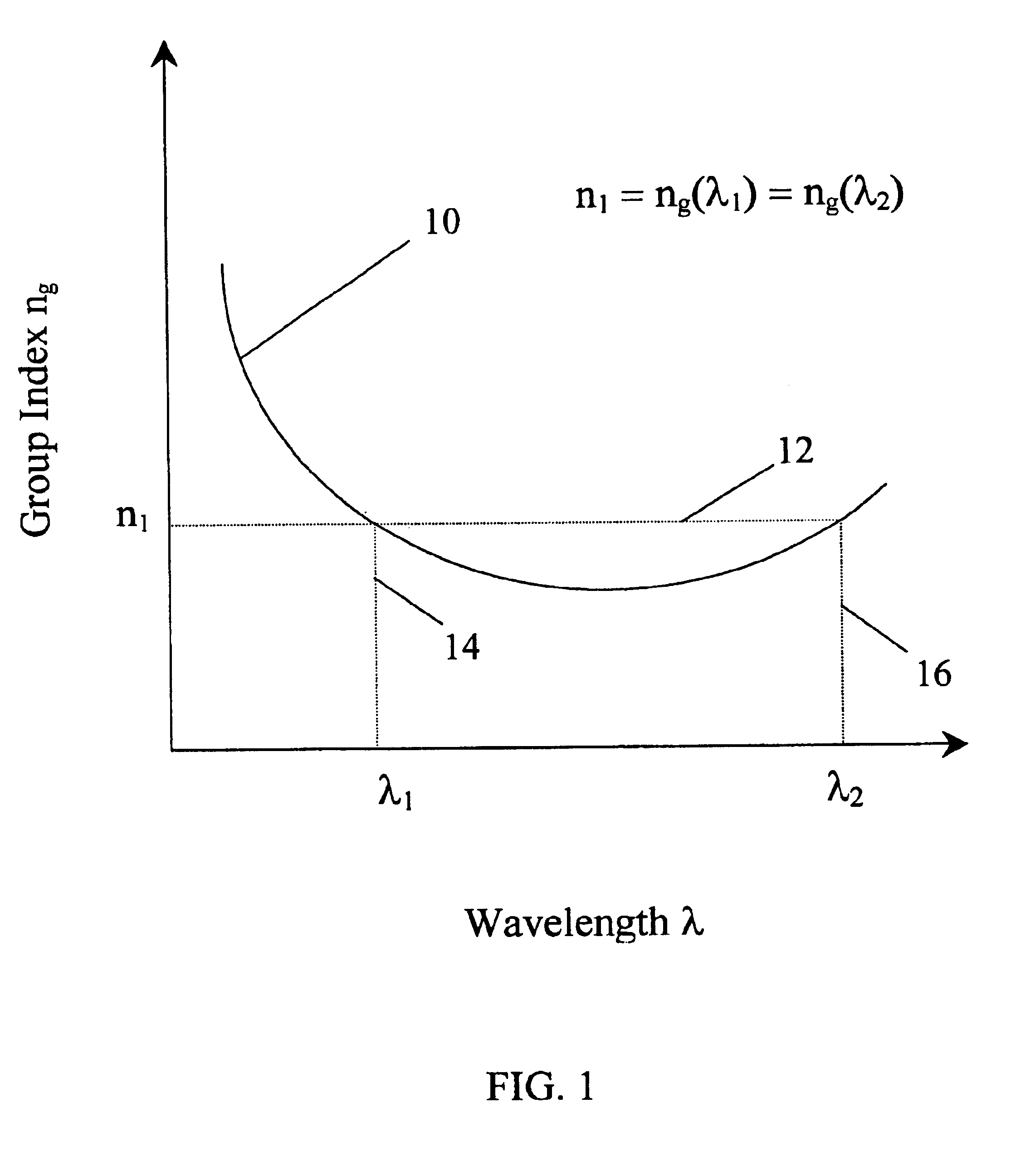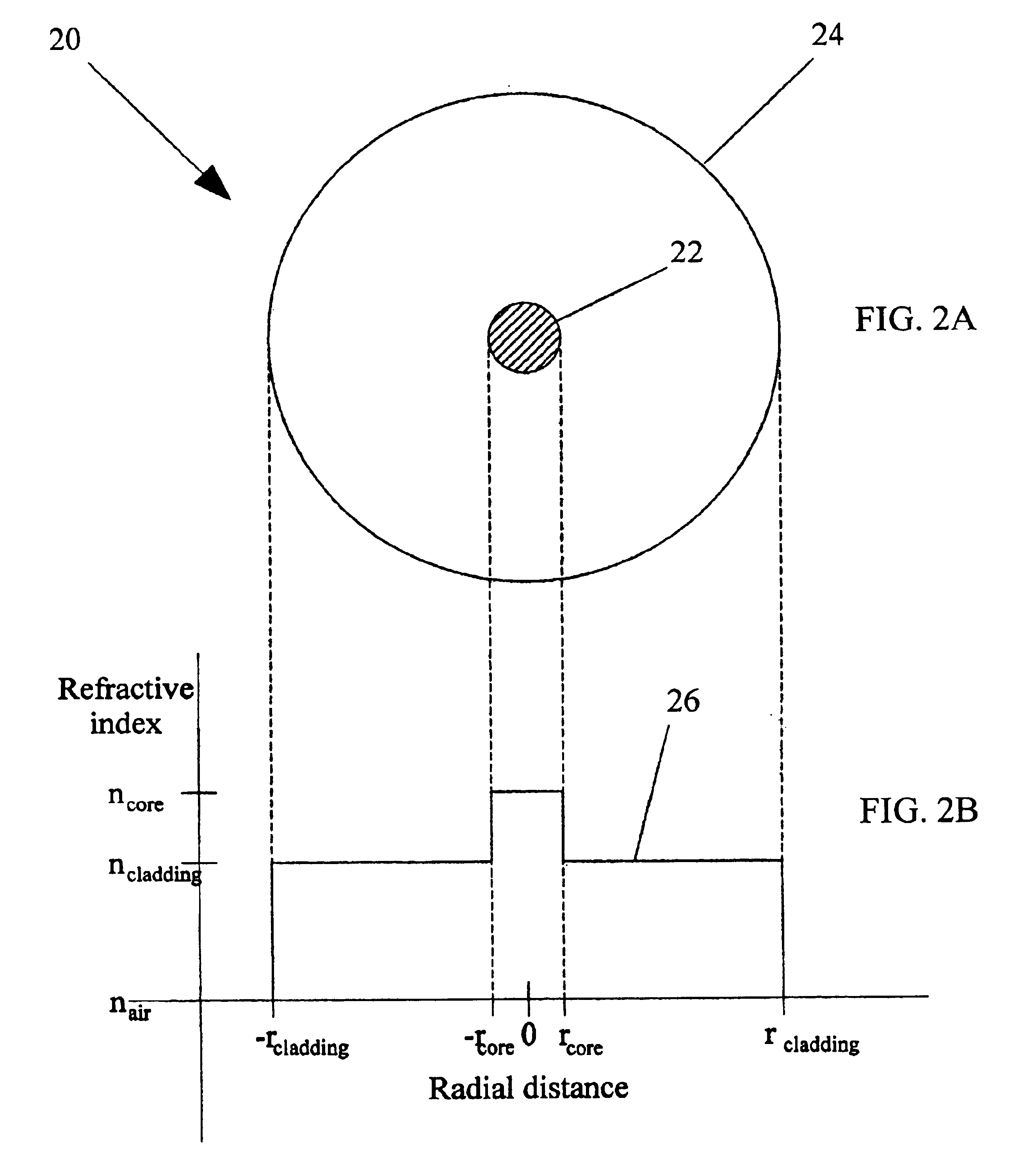Reduced four-wave mixing optical fiber for wavelength-division multiplexing
a four-wave mixing, wavelength-division multiplexing technology, applied in the field of optical fibers, can solve the problems of easy removal, increase in error, and four-wave mixing (fwm)
- Summary
- Abstract
- Description
- Claims
- Application Information
AI Technical Summary
Benefits of technology
Problems solved by technology
Method used
Image
Examples
Embodiment Construction
Turning again to the drawings, attention is immediately directed to FIG. 2A, which illustrates one embodiment of an optical fiber, generally indicated by the reference numeral 20. Optical fiber 20 includes a core 22 surrounded by a cladding 24. The dimensions of core 22 and cladding 24 are similar to those of a conventional single mode fiber, which commonly has a core diameter of 4 μm and a cladding diameter of 125 μm. Core 22 and cladding 24 are based on silica glass (SiO2) or a similar material. Core 22 and cladding 24 are designed to have different values of refractive index such that light of a specified range of wavelengths is guided through the optical fiber.
The relative values of the refractive index of air, cladding and core are shown in FIG. 2B by line 26. As in the case of conventional single mode fiber, the refractive index value of the cladding (ncladding) is relatively higher than that of air (nair), and the core is composed of a material with a refractive index value (...
PUM
 Login to View More
Login to View More Abstract
Description
Claims
Application Information
 Login to View More
Login to View More - R&D
- Intellectual Property
- Life Sciences
- Materials
- Tech Scout
- Unparalleled Data Quality
- Higher Quality Content
- 60% Fewer Hallucinations
Browse by: Latest US Patents, China's latest patents, Technical Efficacy Thesaurus, Application Domain, Technology Topic, Popular Technical Reports.
© 2025 PatSnap. All rights reserved.Legal|Privacy policy|Modern Slavery Act Transparency Statement|Sitemap|About US| Contact US: help@patsnap.com



